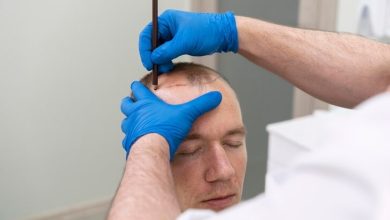Your Comprehensive Guide to Ptosis

Do your eyes look sleepy when you look in the mirror? Or does your upper eyelid sag a little over and cover your pupil? It could be ptosis – a condition whereby your upper eyelid droops. Droopy eyelids can result from nerve damage, underlying medical conditions, or serious problems like stroke or neurological disorders. Sometimes ptosis is present at birth (congenital ptosis), but you can also develop the condition later in life (acquired ptosis. Depending on the cause, ptosis Peoria may come and go or be permanent. Read on to learn more about this condition.
What are the symptoms of droopy eyelids?
Sagging of one or both upper eyelids is the main symptom of ptosis. The drooping eyelid is not painful but might block your sight depending on how much it obstructs the pupil. If your condition is severe, you may need to tip your head back or lift your chin so you can see at all times, even during a normal conversation. However, for many people with ptosis, eyelid sagging occurs occasionally and is not severe.
Your eyes may become extremely dry or watery, and your face may look weary or tired. The areas around the eyes are the ones that are mainly affected; you may experience aching, which can give you a tired look. If you have persistent droopy eyelids, you should get checked to ensure you have no underlying conditions. Seeking medical help is especially important if new symptoms such as migraine headaches have appeared since you first noticed the drooping.
Who gets droopy eyelids?
The causes of droopy eyelids range from natural causes to more serious conditions such as stroke. Anyone, regardless of gender and ethnic group, can get droopy eyelids; there are no substantial differences in prevalence between men and women or people of different races. However, the prevalence of ptosis among older individuals is higher because of the natural aging process. As you grow older, the levator muscle responsible for lifting the eyelid can stretch and cause the eyelid to fall. Although older people are more likely to have droopy eyelids, ptosis can affect people of all ages; babies are sometimes born with ptosis, which is rare.
What is the treatment for droopy eyelids?
There are different treatments for droopy eyelids; the one your doctor recommends depends on the cause and severity of your condition. If you were born with the condition or developed it due to age, but it doesn’t affect your vision, your doctor may explain that treatment is unnecessary. However, to reduce drooping, you may discuss plastic surgery with your doctor.
If your droopy eyelid is due to an underlying condition, your doctor will likely offer treatment to address the existing problem; this should stop your eyelids from sagging. Severe cases of ptosis require medical treatment, which may include glasses or surgery. If your droopy eyelid is temporary, your doctor may recommend a ptosis crutch – glasses that can hold up the eyelid. Glasses may also be a treatment option if you are not eligible for surgery.
If you have further questions about ptosis, consult your Arizona Ocular & Facial Plastic Surgery specialist.




